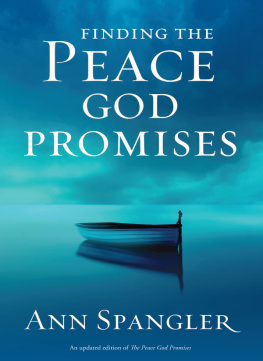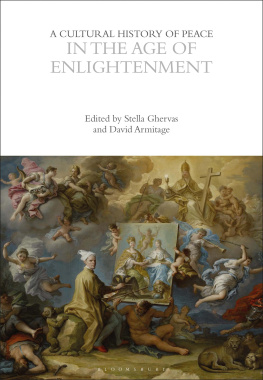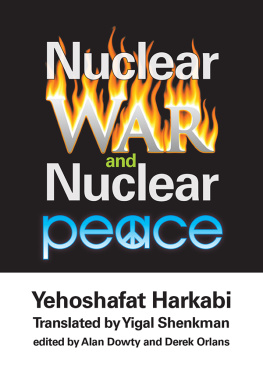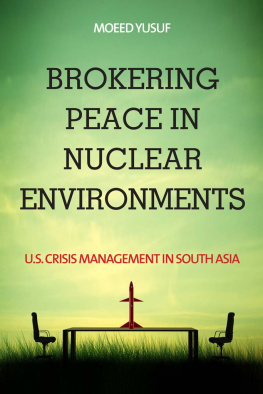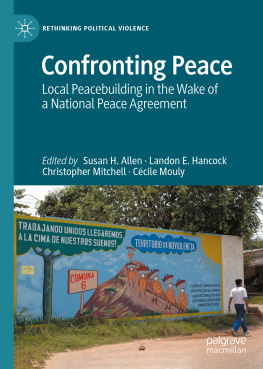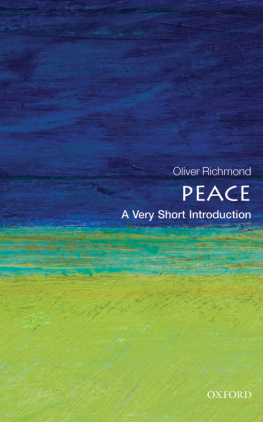Paths to Peace
The Henry Rolfs Book Series of the Institute of Noetic Sciences
Higher Creativity:
Liberating the Unconscious Mind for Breakthrough Insights
Willis Harman and Howard Rheingold
Waking Up:
Overcoming the Obstacles to Human Potential
Charles T. Tart
The Noetic Sciences Book Series is dedicated to Henry Rolfs, a long-standing member of the Board of Directors, whose leadership, generosity, and personal courage have been instrumental in establishing the Institute of Noetic Sciences.
About the Book and Authors
A primer on thinking about peace in a nuclear age, this book describes the kinds of peace efforts that have been triedand those that might be triedfrom the highest echelons of government policymaking to the grassroots level of individual endeavor. Its primary goal is to enable the reader to understand ways of eliminating the threat of nuclear war and to be empowered to take action.
The book describes and compares nine basic methods people have used to achieve peace, ranging from such conventional approaches as the theories of deterrence and balance of power to more unconventional strategies such as nonviolent resistance. Essentially all significant ideas for achieving and maintaining international peace fall into one of these nine categories or combine features from several. Many have been tried, but all clearly have been found wanting.
Yet the authors' tone is one of optimism as they explore some of the major changes of the past quarter century. They contend that these changes alter the balance of advantages and disadvantages among the various paths to peace, so that what seemed partially workable in the past may not be appropriate to the present and what seemed totally impractical in the past might have a chance of working today. The book concludes with a scenario that may make a stable peace possible in the foreseeable future.
Richard Smoke is professor of political science and research director, Center for Foreign Policy Development, Brown University. Willis Harman is president of the Institute of Noetic Sciences, Sausalito, California.
Published in cooperation with the Institute of Noetic Sciences
Paths to Peace
Exploring the Feasibility of Sustainable Peace
Richard Smoke
with Willis Harman
First published 1987 by Westview Press
Published 2019 by Routledge
52 Vanderbilt Avenue, New York, NY 10017
2 Park Square, Milton Park, Abingdon, Oxon OX14 4RN
Routledge is an imprint of the Taylor & Francis Group, an informa business
Copyright 1987 by the Institute of Noetic Sciences
All rights reserved. No part of this book may be reprinted or reproduced or utilised in any form or by any electronic, mechanical, or other means, now known or hereafter invented, including photocopying and recording, or in any information storage or retrieval system, without permission in writing from the publishers.
Notice:
Product or corporate names may be trademarks or registered trademarks, and are used only for identification and explanation without intent to infringe.
Library of Congress Cataloging-in-Publication Data
Smoke, Richard.
Paths to peace.
Includes index.
1. Peace. 2. Nuclear arms control. I. Harman,
Willis W. II. Title.
JX1952.S686 1987 327.1'72 87-2173
ISBN 13: 978-0-367-28238-7 (hbk)
by Willis Harman
The existence of nuclear weapons has presented us with a requirement for 100 percent reliability that is found nowhere else in human affairs. Human civilization cannot survive even one global nuclear war. In this sense our endeavor to achieve lasting peace and common security must succeed.
One might think that with this unprecedented challenge before us, there would be no effort spared in pursuit of the goal; that both governments and individual citizens would be unrelenting and single-minded in our common hour of need. Yet such is not the case. Our "national security" policies are confused and most certainly do not provide a feeling of security. Our stance toward peace is ambivalent and indecisive; in some circles the word "peace" has taken on connotations of weakness or of empathy with the Soviets. Much of the public seems disinterested, apathetic, and resigned or feels powerless to take effective action. Few people feel capable of thinking clearly about the issue; few have confidence in the ability of their leaders to guide them wisely toward a peaceful future.
It is this situation that is addressed by this book. We who are alive today, and whose future world is so at risk, typically do not think clearly about peace. Even the definition of the word is not thought through when we speak or write about peace. That is why this book is written as a primer. It is sophisticated, but simple.
The conviction that permeates the book is that peace and the general security of all are attainable goals. But to achieve them will require a whole-system change: the combined efforts of vast numbers of people around the globe thinking clearly about the issues and committing themselves to achieving those critically important goals. Paradoxically, the need for a whole-system change does not necessarily make the goal appear less achievablewhole-system change has happened before and could happen againbut rather indicates the kinds of actions that are likely to be effective.
A brief summary will adequately serve to remind us of what is almost obvious: Peace is a whole-system issue. The production of weaponry was once carried on almost exclusively by governments for their own use; commerce in weapons between nations was considered highly unethical. The manufacture and sale of weapons now represents a significant segment of the U.S. economy, and the economic repercussions of a serious cutback in military production could be severe, at least temporarily. The continuing military buildup has a momentum all its own. Part of that momentum is the psychological inertia of conventional ways of thinking about international conflict.
In the United States, the immediate point of conflict appears to center around the fear of communism and involves not just the NATO countries versus the Warsaw Pact countries; the rest of the world is part of the conflict as well. And the fear is not only that territory may be taken by force but also that noncapitalist ideas may gain hold in other parts of the world. (The wisest response to that threat would seem to be to make sure that the free enterprise system works so well for everybody that alternative systems have no appeal. Unfortunately, when we are fearful we do not always take the wisest course.)
There is an implicit assumption in most discussions of peace that the Soviet Union is the "enemy" of permanent concern. But North-South tensions are likely to long outlast that particular temporary conflict. The rich capitalist countries require ever-increasing consumption for the well-being of their economies, yet the planet would be hard-pressed to accommodate all five or six billion people in mass-consumption societies. On the other hand, it is hard to imagine a state of peace on the planet when the vast majority of people remain in a condition of relative privation while the minority strives to increase consumption to maintain flourishing economies. This issue of the relationship between the consuming minority in the rich nations and the far-poorer vast majority of the Earth's population is likely to remain long after the Soviet Union and the United States have learned to coexist.


